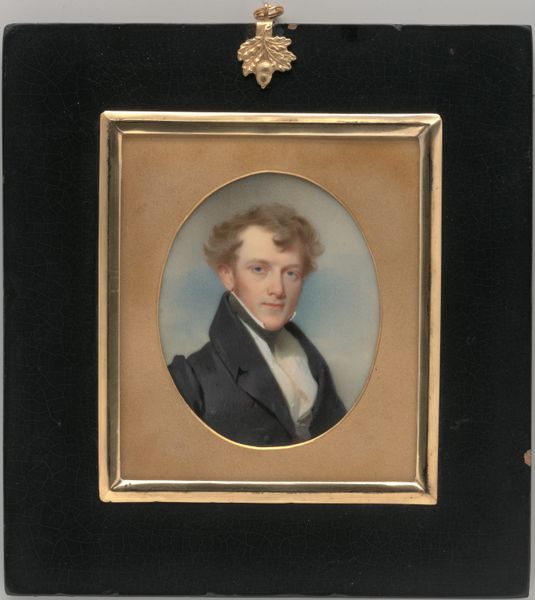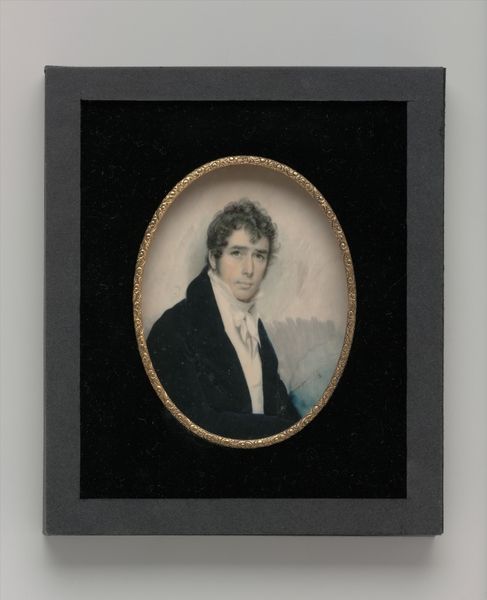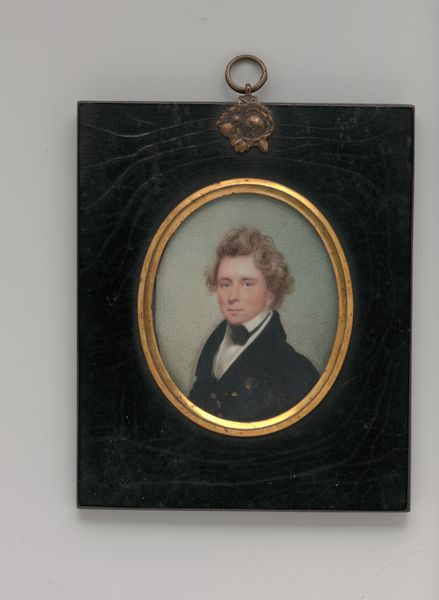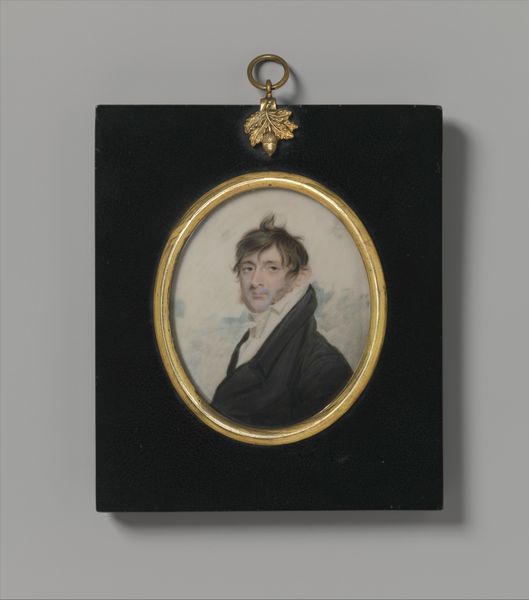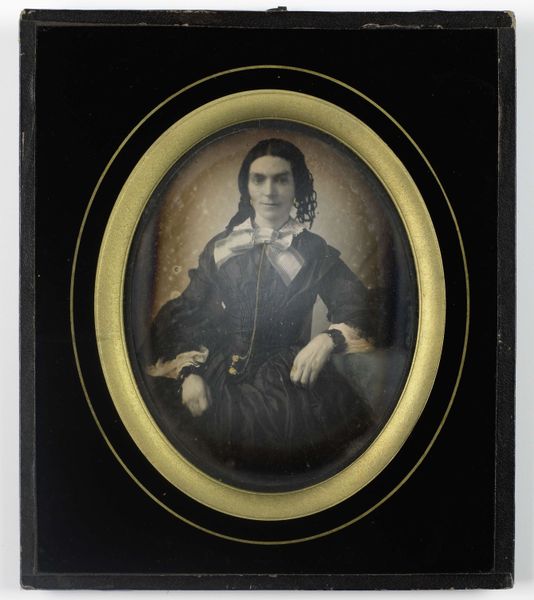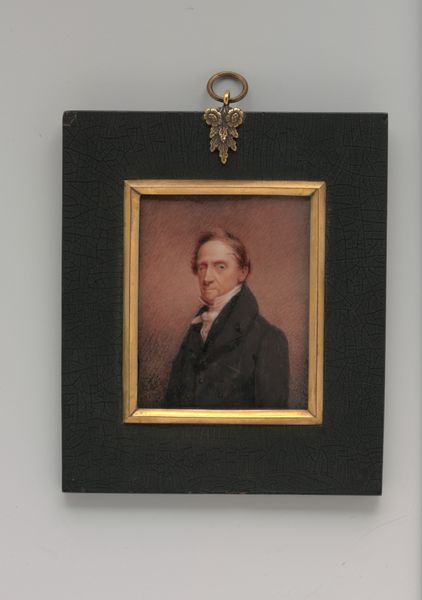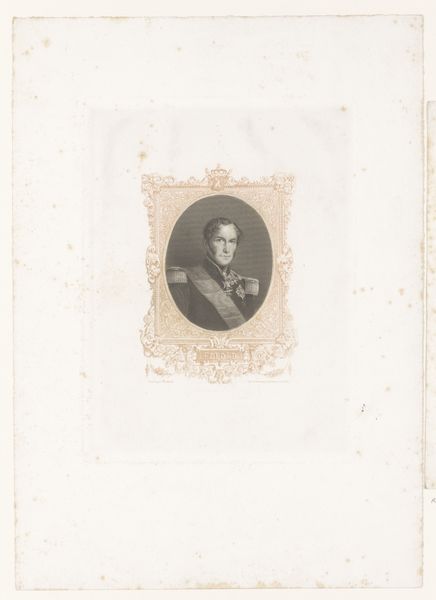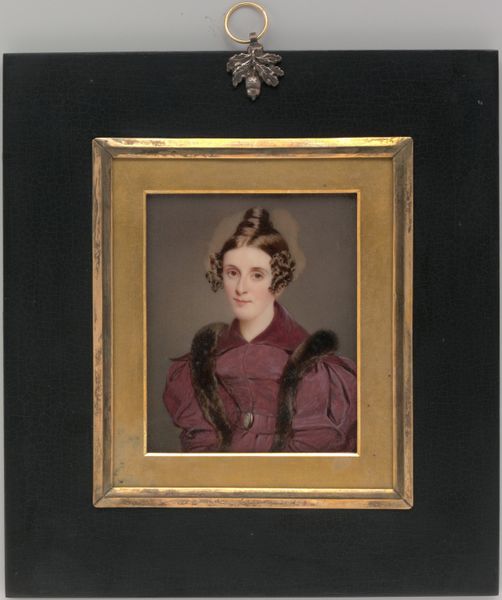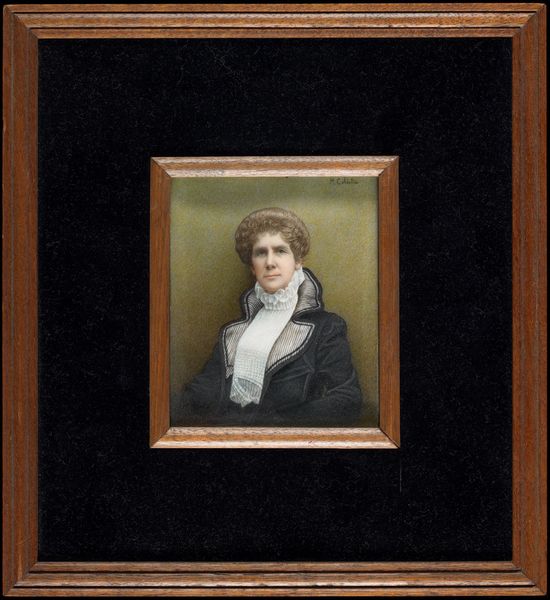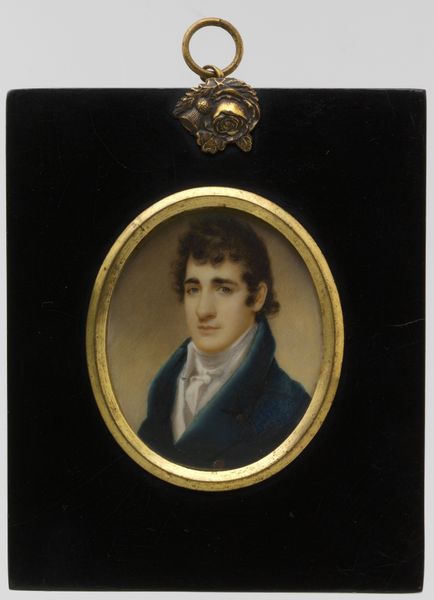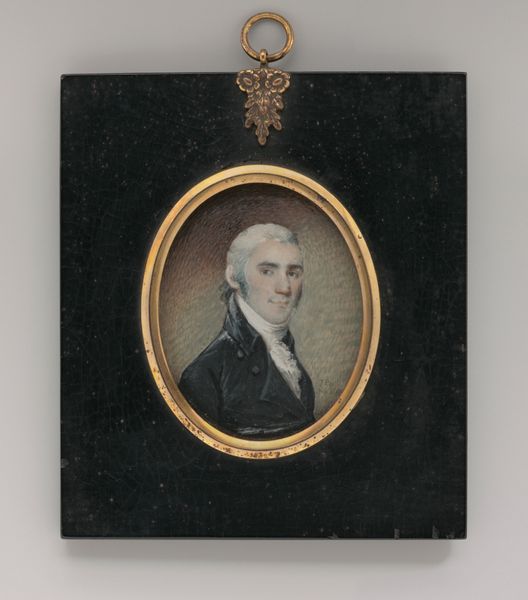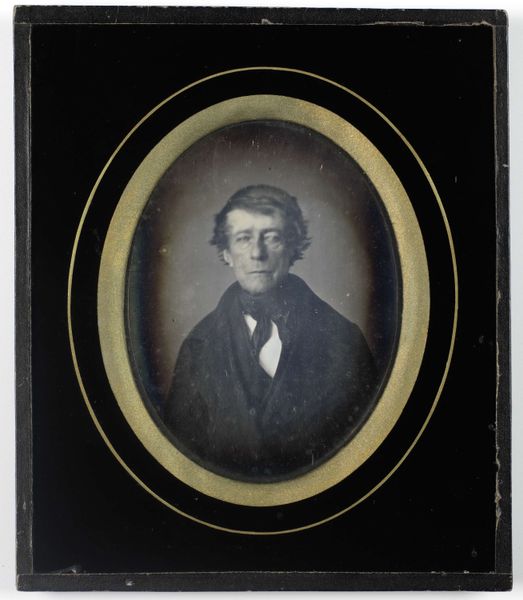
painting, oil-paint
#
portrait
#
painting
#
oil-paint
#
classical-realism
#
strong focal point
#
romanticism
#
men
#
united-states
#
history-painting
#
framed
Dimensions: 3 x 2 in. (7.6 x 5.1 cm)
Copyright: Public Domain
Curator: There's something undeniably serious about this man's gaze, almost penetrating, isn't there? Editor: It’s the eyebrows! So dark, intense and slightly asymmetric—almost comically severe in this small portrait. Who is he? Curator: This is Frederick Gore King, painted between 1824 and 1827 by Thomas Seir Cummings. What we see is a miniature portrait in oil. Editor: Miniature is right! It looks… precious. Almost like something worn as jewelry. Did portraits like this signify something specific socially? Curator: Absolutely. Miniature portraits like these functioned as portable symbols of status, intimacy, and remembrance within networks of kinship and political alliance during that era in the United States. The subject’s features, attire, and bearing all worked together to project a certain image of wealth and refinement. Editor: So, the heavy fur collar of his coat isn't just for warmth, but for show? How do you interpret his style? Curator: His dress is indicative of an elevated position; you will notice subtle details like the precisely tied cravat, the cut of his coat. The color scheme—dominated by plum and black—creates a rather severe effect, almost conveying a sense of restraint. Editor: Restraint is definitely what comes to mind! It’s as if he is being presented in a manner that adheres to societal norms. It makes you wonder about the tension between how he perceived himself and how he was perceived. Do you think Cummings did his subject justice? Curator: That is hard to tell definitively without more historical documentation about the sitter, but I believe so. This is less of a representation of the sitter and more an encapsulation of the cultural memory. His portrayal in paint transcends its subject. He's almost archetypal. Editor: It's curious how much we still read into images like these. The past isn't really dead, as they say—it isn't even past. This portrait shows us a version of our own contemporary impulses of self-definition. Curator: Yes, art objects such as these portraits serve as portals between historical reflection and enduring symbols of ourselves.
Comments
No comments
Be the first to comment and join the conversation on the ultimate creative platform.

